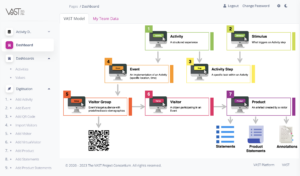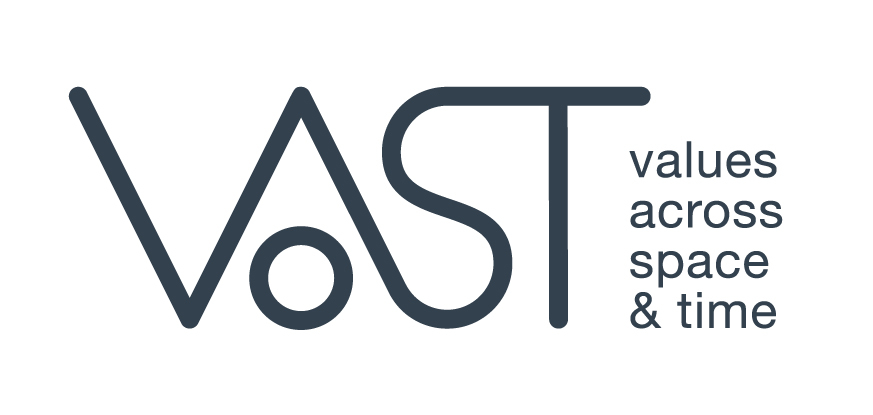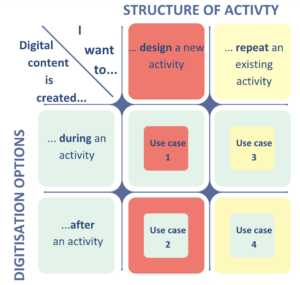What can VAST offer to educators?
VAST supports CH, museum and education professionals who want to design and do activities related to values and CH, by avoiding personal biases and limited perspectives and by providing guidance through appropriate methods, applied materials and tools, as well as, by supporting the diffusion of gained experiences to the community.
What can you find on the VAST platform?
- Find implemented activities by…
- … browsing through the list of handbooks in the materials section
- … browsing through the activity explorer
- Find the methodologies to design you our activity in the materials section
- Get informed about values and the experiences of your peers through the audiovisual resources and the success stories
- Get inspired for using a new CH artefact during the design of your activity by browsing through the list of studied artefacts
- Explore games and other digital activities that you can integrate in your activities
- Find the services that will support you in the digitisation process pre-, peri- and post- activity
- Check-out VAST’s digitisation tool
Explore further…
VAST platform at a glance…
How to use the activity explorer through an example…
Use case journeys through the platform…
How to design a new activity?
About VAST’s digitisation tool…
VAST platform at a glance
Design, Do, Digitise, and Diffuse comprise VAST’s 4 D’s related to the co-creation of educational activities that aim at raising awareness about values through CH. Go through the platform’s sections to find more info about each.
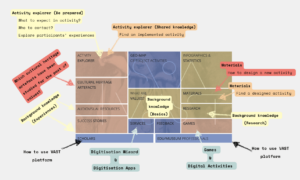
How to use the activity explorer through an example…
User Story: “Cleo X. is a school teacher who wants to run an educational activity in her class to spark a discussion related to “Freedom” on the occasion of the National Liberation Day of their country. What have people struggled to be freed from across centuries? What does freedom mean today? So, she decides to visit the VAST platform and look at how VAST can support her towards this end.”
Check out her questions!
Q: Is there a VAST co-creation activity that prompted participants to discuss “Freedom”?
A: Run a value-based search of activities…

This search returns a list of implemented VAST activities where this value is encountered:
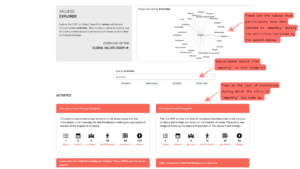
Q: What is the content (structure and steps), the provided material (hanbook, products, etc.) related to each activity? What are the details (such as location, language, etc.) related to each activity’s event?
A: Browse through an activity to find all the related information…
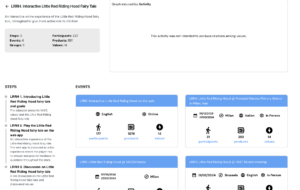
Q: What are the products of the participants? How frequently did the value of “Freedom” emerge? (Food for thought… did I expect this given the CH artefact that triggered the discussion?)
A: Browse through an event of an activity and have a look at the values graph, the products, and the histogram of values…
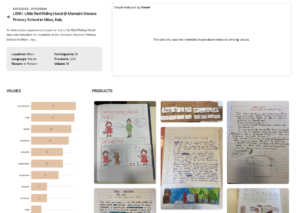
Use case journeys through the platform…
… depend on whether one wishes to design a new activity or repeat an existing one, as well as whether the digital content is created only after the activity or during the activity as well. Following, we describe the four general use cases that are possible in VAST.
| Use Case 1: -Use VAST methodology to design your activity -Use the digitisation tool to set-up a QR code -Run the activity -Digitise any material that were not collected digitally through an app/game -Check out how your activity looks in the activity explorer |
Use Case 3: -Get prepared by reading the activity’s handbook and browsing through the collected experiences to know what to expect -Use the digitisation wizard to set-up a QR code -Run the activity -Digitise any material that were not collected digitally through an app/game -Check out how your activity looks in the activity explorer |
| Use Case 2: -Use VAST methodology to design your activity -Run the activity -Digitise the material that were collected -Check out how your activity looks in the activity explorer |
Use Case 4: -Get prepared by reading the activity’s handbook and browsing through the collected experiences to know what to expect -Run the activity -Digitise the material that were collected -Check out how your activity looks in the activity explorer |
How to design a new activity?
VAST activities are informed by educational, museological and research methods. The design of an activity starts by defining and understanding the following aspects:
target audience (age, background, etc.); specificities of each museum /CH organisation; values to be discussed: the activities need be anchored to the values of past (historiographical approach), and create bridges to the values of the present (attracting audiences); selection of the artefact, based on the above, as well as on other factors, e.g. the familiarity of the audience with the CH artefact, and context of implementation (museum, school, other place, etc.).
Once all these are defined, the structure of the activity can to be designed. The table below presents a generic structure of a VAST activity and introduces how each step relates to all different design considerations. This structure facilitates the design of new activities and is the product of the extensive experience gained throughout the activities implemented during the VAST project.
About VAST’s digitisation tool?
Sign-up and use the VAST digitisation tool. Explore VAST digitisation process!
